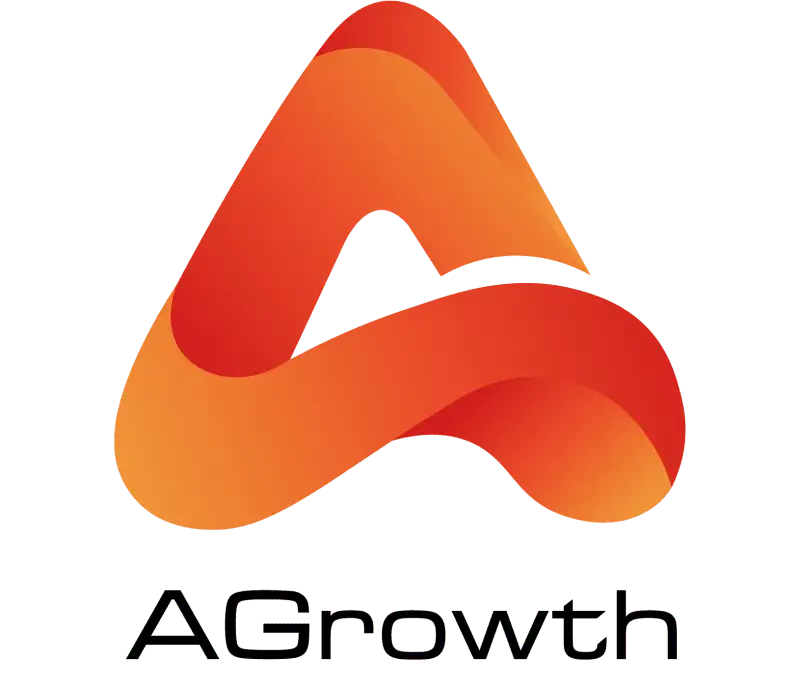
Table of Contents
How To Export Leads From Facebook Ads Manager
Every successful Facebook advertiser knows that generating leads is only the first step. The real value begins once you export and manage those leads effectively. Whether you're handling campaigns for a single brand or managing multiple accounts, being able to export leads from Facebook Ads Manager efficiently ensures that no potential customer is lost in the process.
Exporting leads allows advertisers to back up data, integrate it with CRM systems, and trigger automated follow-ups. According to Meta’s official documentation, “lead information is only available for 90 days” after submission. That means if you don’t download or connect your leads within that time frame, the data may disappear permanently — a major risk for anyone managing high-volume campaigns.
In this article, we’ll walk through everything you need to know about exporting Facebook leads — from manual downloads to automated workflows, best practices, troubleshooting, and advanced insights to future-proof your data operations.
Why You Should Export Leads from Facebook Ads Manager
Treating Facebook Ads Manager as your primary lead database is a costly mistake. Exporting your leads is a non-negotiable part of a professional marketing workflow for four key reasons:
Secure Your Data (Secure Backup)
Leads are valuable assets. Facebook is an advertising platform, not a permanent CRM. As we'll cover, leads are automatically deleted after 90 days. If you don't export them, they are gone forever.
Enable Deeper Analysis
You can't run a VLOOKUP or create a pivot table inside Ads Manager. Exporting to CSV or Google Sheets allows you to analyze lead quality, cross-reference data with other marketing channels, and track performance far beyond Facebook's native reporting.
When calculating the true ROI of your exported leads, it is crucial to understand your Facebook attribution settings to know exactly which touchpoints deserve credit for the conversion.
Integrate with Your CRM
This is the most critical driver. Your leads need to be in your CRM (whether it's HubSpot, Salesforce, Zoho, or a custom-built solution). This is the only way to track them from initial contact to a closed sale, calculate true ROI, and manage your sales pipeline.
Dramatically Improve Response Time
The single biggest factor in lead conversion is speed. A lead that receives a follow-up in 5 minutes is exponentially more likely to convert than one that waits 24 hours. A manual export process simply cannot compete.
What You Need to Know Before You Export
Before you dive in, a few prerequisites will save you hours of frustration. Getting your setup right is half the battle.
The 90-Day Data Retention Limit
This is the most critical piece of information many advertisers learn too late. As confirmed by Meta's official documentation, "You can download your leads from your Meta Business Suite or forms library for up to 90 days after they're submitted."
After 90 days, that lead data is permanently deleted. You cannot retrieve it. This policy makes a regular export or automation strategy an absolute necessity.
Permissions & Account Setup
You can't export what you can't see. The "I can't find my leads" problem is almost always a permissions issue. To export leads, you need specific access:
-
Correct Ad Account: Ensure you are in the exact Ad Account that ran the ad.
-
Correct Page: Leads are tied to the Facebook Page, not just the Ad Account.
-
Correct Permissions: This is the #1 culprit. You need either:
-
Admin access to the Facebook Page.
-
"Leads access" within Meta Business Manager. An Admin can grant you this by going to Business Settings > Integrations > Leads Access and assigning your name to the specific Page.
If you are having trouble viewing lead data, you may need to audit the specific Page roles in Facebook assigned to your team members to ensure they have the necessary clearance.
Format Considerations: CSV vs. XLS/XLSX
When you download, you'll typically see options for CSV or XLS.
-
CSV (Comma-Separated Values): This is the universal standard. It's a plain-text file that is compatible with virtually every CRM, email platform, and spreadsheet program (including Google Sheets and Excel). This is the recommended format for most integrations.
-
XLS/XLSX: This is the native Microsoft Excel format. It's fine if your entire workflow lives within Excel, but it can sometimes cause import errors with other platforms.
If you are analyzing lead value across different regions, always double-check your Facebook ad account currency to avoid discrepancies when importing data into your financial reports.
How to Export Leads from Facebook Ads Manager (Manual)
For low-volume campaigns or for performing a quick spot-check, the manual process is fast and effective. There are two primary places to find your leads.
Export via Ads Manager
This is the most direct path if you are already optimizing your campaigns.
-
Step 1: Log in to your Facebook Ads Manager. Select the correct Ad Account and navigate to the Campaigns tab.
-
Step 2: Click on the campaign name that is running your Lead Ads.
-
Step 3: Navigate to the Ads tab within that campaign.
-
Step 4: Look at the Results column. You should see a number with the label "On-Facebook Leads." Click this hyperlinked number.

-
Step 5: A pop-up window will appear showing your forms. Find the form you want and click Download.
-
Step 6: You will be prompted to select a date range or "Download by date range." Choose your range and select either CSV or XLS.

-
Step 7: Save the file with a clear naming convention, such as CampaignName_FormName_YYYY-MM-DD.csv.
To ensure your exported files are easy to sort and identify later, applying consistent Facebook ad naming conventions to your campaigns is highly recommended.
Export via Meta Business Suite / Page Leads Center
This method is often easier as it gathers all forms for a Page in one place, separate from the campaign structure.
-
Step 1: Navigate to your Meta Business Suite.
-
Step 2: From the left-hand menu, select All Tools.
-
Step 3: Find the "Advertise" section and click on Leads Center (this may also be called "Forms Library" or "Lead Ads Forms" depending on your account version).

-
Step 4: At the top, ensure the correct Facebook Page is selected.
-
Step 5: You will see a list of all forms created for that Page and the corresponding lead count.
-
Step 6: Find the form you wish to export from and click the Download button in its row.
-
Step 7: Select your date range and file format (CSV is recommended).

Quick Tips for Manual Export Efficiency
-
Schedule It: Set a recurring calendar reminder (e.g., every day at 4 PM) to download new leads. Don't leave it for "later."
To ensure your export schedule aligns with your local business hours and CRM reporting, you may need to learn how to change the time zone in Facebook Ads Manager.
-
Use Filters: Always use the "Download by date range" filter to select only "New Leads" or "Today's Leads." This prevents you from downloading a massive, unwieldy file with duplicate contacts.
-
Organize Your Folders: Create a dedicated folder in a shared cloud drive (like Google Drive or OneDrive) for all lead exports. Name folders by month (e.g., Client_Leads_2024_10).
-
Backup Immediately: As soon as you download the file, upload it to your shared cloud drive. Your local hard drive is not a secure backup.
How to Automate Lead Export & Integration
Manual exporting may work at first, but automation saves time and reduces human error — especially when dealing with multiple campaigns or Pages.
Automation ensures instant lead delivery to your CRM, marketing platform, or email system the moment a user submits a form. This speed is crucial, as delayed follow-ups often lead to lower conversion rates.
Native CRM Integrations
Facebook provides built-in integration options for many CRM systems. You can connect your Page’s lead forms directly to your CRM under Meta Business Suite > All Tools > Instant Forms > CRM Setup.
The setup usually involves:
-
Choosing your CRM from the list of supported integrations.
-
Granting permissions to sync form fields.
-
Testing the connection to confirm data is flowing correctly.
Once integrated, new leads are automatically transferred to your CRM database in real time.
Third-Party Automation Tools
If your CRM or marketing platform isn’t natively supported, you can use third-party workflow tools. These platforms allow you to connect Facebook Lead Forms with thousands of other applications, such as email platforms, project management tools, or internal dashboards.
A typical workflow involves selecting Facebook Lead Ads as the trigger and defining an action for instance, “Add a new row to a spreadsheet” or “Send lead data to CRM.” Once configured, every new lead submission triggers the automation instantly.
Using API or Data-Connector Platforms
For agencies or large-scale advertisers managing multiple ad accounts, using API-based data connectors is the most robust approach. These tools can automatically pull lead data from all connected Pages into one centralized database or reporting dashboard.
The advantage of this method is scalability — you can process thousands of leads daily across different clients without manual intervention. It also ensures historical tracking, letting you monitor long-term performance beyond Facebook’s 90-day window.
AGROWTH - META AGENCY ACCOUNT
⭐ Managed campaigns with expert guidance
⭐ Flexible invoice-based billings, custom top-ups
⭐ High resistance to suspension via agency tier
⭐ Quick fund transfer to new account if needed
⭐ Priority support via Facebook Partner channel
⭐ Lower fees from 3%
Best Practices for Exporting & Managing Leads
Once your export process is in place, maintaining clean and structured data is essential for smooth operations.
Export Frequency
For active campaigns, export data daily or automate continuous syncing. Weekly exports may suffice for smaller or seasonal campaigns.
File Naming & Organization
Develop a consistent system. Use dates and campaign identifiers in file names, and keep them in clearly labeled folders.
Data Cleansing
Before importing into CRM, clean the dataset. Remove duplicates, validate emails and phone numbers, and check for missing fields. This prevents inaccurate reports or wasted follow-up efforts.
Immediate Follow-Up
Contact new leads as soon as possible — ideally within the first hour. Fast responses increase the likelihood of converting interest into sales.
Segmentation
Group leads by campaign, ad set, or creative type. This helps you evaluate which messages or visuals drive the highest-quality leads.
Compliance
Always handle exported data according to privacy laws like GDPR and CCPA. Store files securely and limit access only to authorized team members.
Troubleshooting Common Issues
Even experienced advertisers can encounter issues when exporting leads. Here are some of the most frequent problems and their solutions.
Form Not Listed / Missing Leads
This is 99% a permissions problem
Go to Meta Business Manager > Integrations > Leads Access. Select your Page and ensure your name is on the access list. If not, have a Business Admin add you. Also, double-check you're in the correct Ad Account and Page.
Data is Older Than 90 Days
This data is gone. There is no fix. This is the (painful) lesson that teaches you to set up a daily export or automation immediately.
"You do not have permission" Error
You are likely an "Advertiser" or "Analyst" on the Ad Account but do not have Page-level "Leads Access." Contact your Business Manager Admin and request this specific permission.
Exported CSV File Looks "Broken" in Excel
This is an encoding or delimiter issue. Instead of double-clicking the CSV, open a blank Excel sheet. Go to the Data tab > Get Data (From Text/CSV). This will open an import wizard. Ensure the Delimiter is set to Comma and the File Origin (encoding) is set to 65001: Unicode (UTF-8). Alternatively, just open it in Google Sheets, which handles this automatically.
My Automation (Zapier/CRM) Suddenly Stopped Working
Someone edited the form. If you add, remove, or change a field on your Facebook Lead Form, it breaks the "mapping" in your automation tool. You must go back into your tool (e.g., Zapier) and "remap" the new fields.
Your authentication token expired. Go into your integration settings and "re-authenticate" or "refresh" your connection to Facebook.
FAQs
Can I export leads for multiple forms at once?
Manually, no. You must select and download leads from one form at a time. This is a primary limitation of the manual process and a key reason to use automation, which can monitor all forms on a Page simultaneously.
Which file format is best for importing into my CRM?
CSV (Comma-Separated Values). It is the universal standard and is far less likely to cause formatting or import errors than XLS or XLSX files.
Can I schedule automatic exports without third-party tools?
No. Meta does not offer a native "scheduled export" feature (e.g., "email me a CSV every Monday"). You must either download manually or set up a real-time integration with a CRM or a third-party automation tool like Zapier.
What happens if I change my form fields after setting up an export?
Changing your form (e.g., adding a "Company Size" field) will break your automation. Your integration (e.g., Zapier, HubSpot) will fail because it's looking for the old form structure. You must edit your integration and "remap" the new fields to your CRM or Google Sheet.
Why are my exported leads full of junk or spam?
Standard lead forms are very low-friction, making them a target for bots. To improve lead quality, use the "Higher Intent" form type (which adds a confirmation step) or include a custom, open-ended question (e.g., "What is your #1 marketing challenge?") that bots can't easily answer.
Do I need to be an Admin on the Ad Account to export leads?
Not necessarily the Ad Account, but you must have "Leads access" for the specific Facebook Page associated with the form. This permission is granted within Meta Business Manager.
Related posts:









Your comment